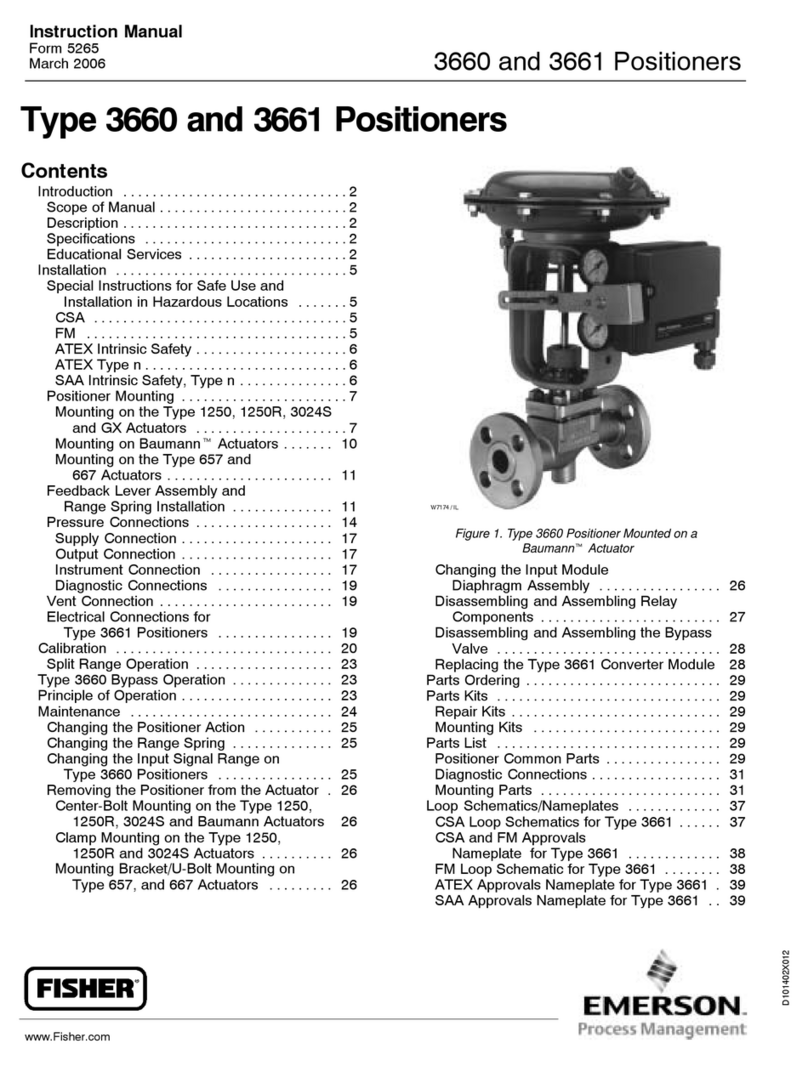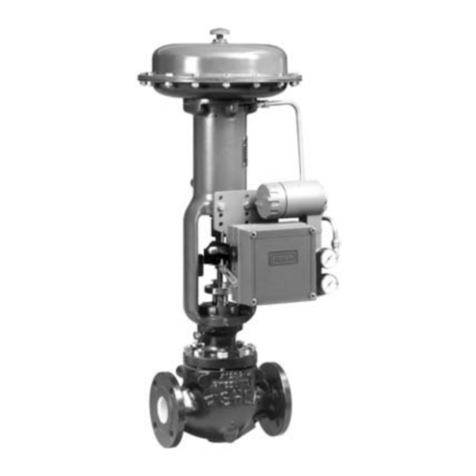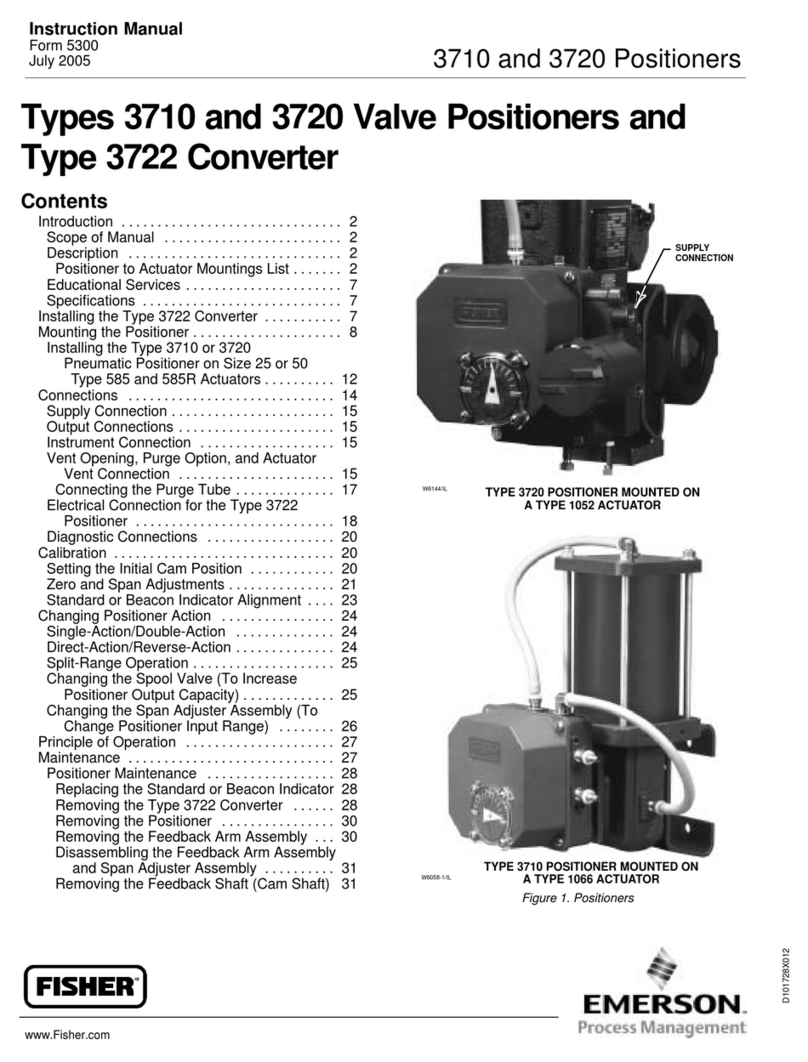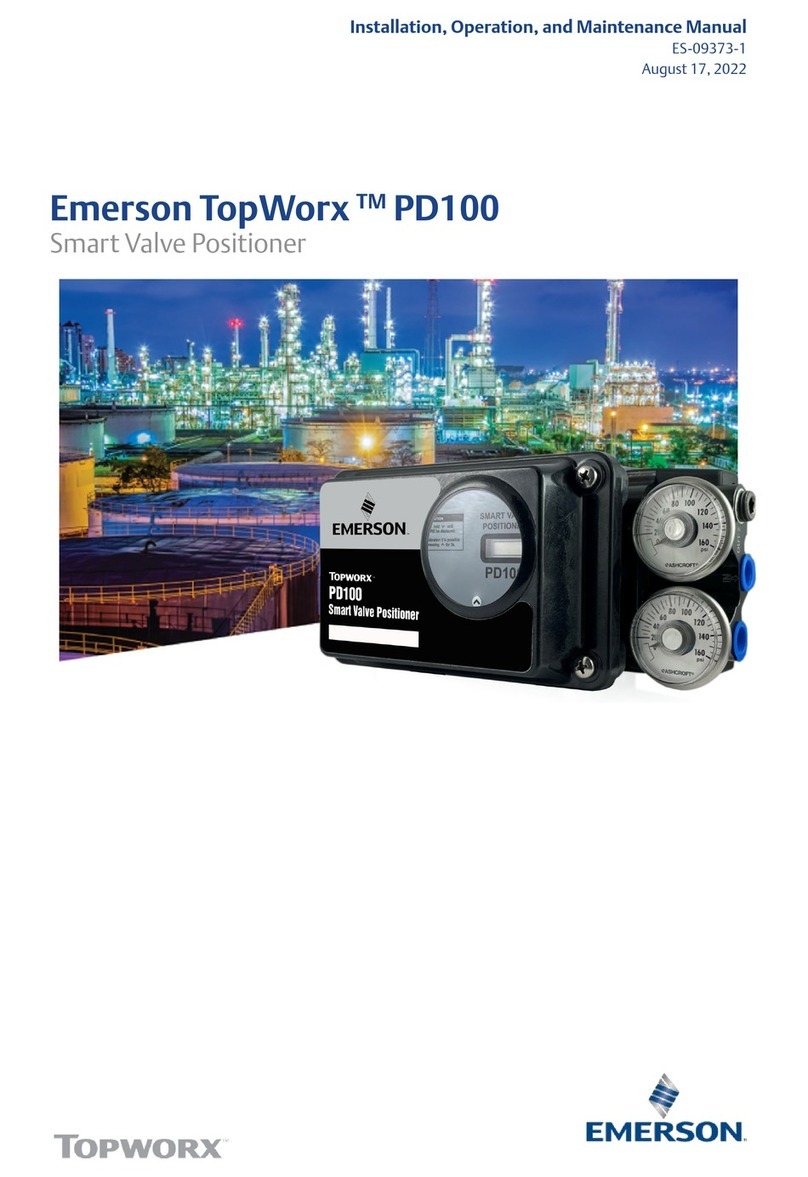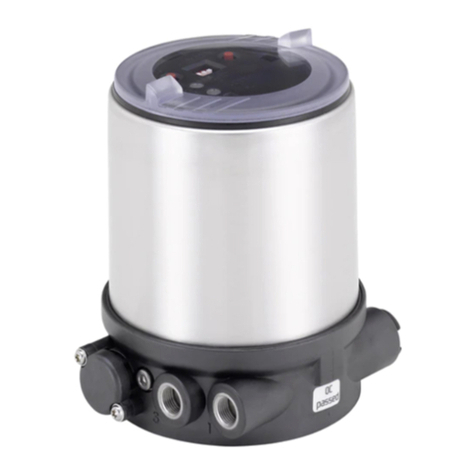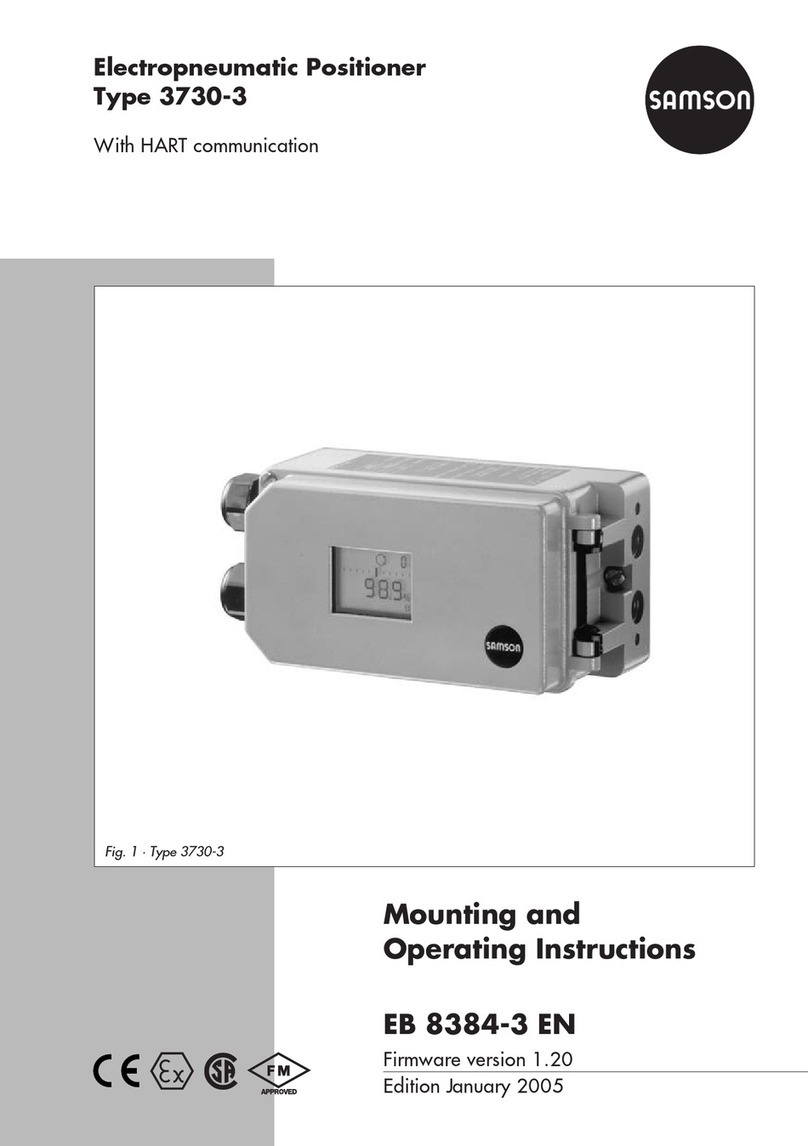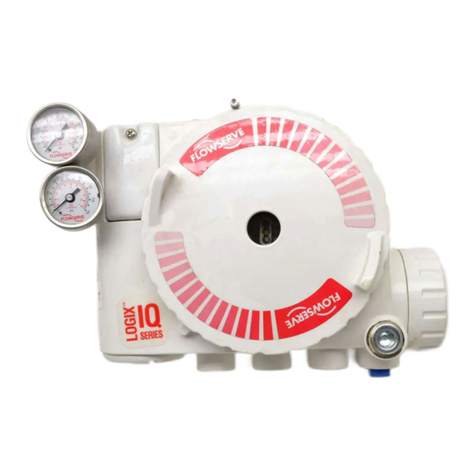
Instruction Manual
D101728X012
3710 and 3720 Positioners
September 2017
4
Table 1. Specifications (Continued)
Hazardous Area Classification for 3710 Positioner
3710 pneumatic positioners comply with the
requirements of ATEX Group II Category 2 Gas and
Dust
Electrical Classifications for 3722 Converter
CSA— Intrinsically Safe, Explosion-proof, Type n,
Dust Ignition-proof
FM— Intrinsically Safe, Explosion-proof, Type n,
Dust Ignition-proof, Non‐incendive
ATEX— Intrinsically Safe, Flameproof, Type n
IECEx— Intrinsically Safe, Flameproof, Type n
Note: These classifications also apply to the 3720
positioner
Refer to Hazardous Area Classifications and Special
Instructions for “Safe Use” and Installation in
Hazardous Locations, starting on page 7, for
additional information.
Housing Classification for 3722 Converter
CSA— Type 3 Encl. ATEX— IP64
FM— NEMA 3, IP54 IECEx— IP54
Mount instrument with vent on side or bottom if
weatherproofing is a concern.
Note: These classifications also apply to the 3720
positioner
Other Classifications/Certifications for 3722
Converter
CUTR—Customs Union Technical Regulations (Russia,
Kazakhstan, Belarus, and Armenia)
INMETRO— National Institute of Metrology, Quality
and Technology (Brazil)
KGS— Korea Gas Safety Corporation (South Korea)
Contact your Emerson sales office or Local Business
Partner for classification/certification specific
information
Pressure Connections
1/4 NPT internal
Electrical Connection for 3720 Positioner
1/2‐14 NPT conduit connection
Rotary Valve Rotation
J90 degrees (standard) J60 degrees (optional)
Approximate Weight
3710: 2.04 kg (4.5 pounds)
3720: 2.72 kg (6.0 pounds)
Declaration of SEP
Fisher Controls International LLC declares this
product to be in compliance with Article 4
paragraph 3 of the PED Directive 2014/68/EU. It was
designed and manufactured in accordance with
Sound Engineering Practice (SEP) and cannot bear
the CE marking related to PED compliance.
However, the product may bear the CE marking to
indicate compliance with other applicable European
Community Directives.
NOTE: Specialized instrument terms are defined in ANSI/ISA Standard 51.1 ‐ Process Instrument Terminology.
1. For direct action, an increasing input signal extends actuator rod. For reverse action, an increasing input signal retracts actuator rod.
2. The pressure and temperature limits in this document, and any applicable code or standard limitation should not be exceeded.
3. Normal cubic meters per hour (0°C and 1.01325 bar absolute). Scfh — standard cubic feet per hour (60°F and 14.7 psia).
4. Typical values tested using a 1061 size 30 actuator at 4.1 bar (60 psig) supply pressure. Performance may vary with other actuator types and supply pressures.
Table 2. Fisher 3722 Electro‐Converter(1) EMC Summary Results—Immunity
Port Phenomenon Basic Standard Test Level Performance
Criteria(2)
Enclosure
Electrostatic Discharge (ESD) IEC 61000‐4‐2 4 kV contact
8 kV air A
Radiated EM field IEC 61000‐4‐3
80 to 1000 MHz @ 10V/m with 1 kHz AM at 80%
14000 to 2000 MHz @ 3V/m with 1 kHz AM at 80%
2000 to 2700 MHz @ 1V/m with 1 kHz AM at 80%
A
Rated power frequency magnetic
field IEC 61000‐4‐8 60 A/m at 50 Hz A
I/O signal/control
Burst (fast transients) IEC 61000‐4‐4 1 kV A
Surge IEC 61000‐4‐5 1 kV (line to ground only, each) B
Conducted RF IEC 61000‐4‐6 150 kHz to 80 MHz at 3 Vrms A
Specification limit = ±1% of span
1. The information contained in this table also applies to the 3720 positioner.
2. A = No degradation during testing. B = Temporary degradation during testing, but is self‐recovering.






